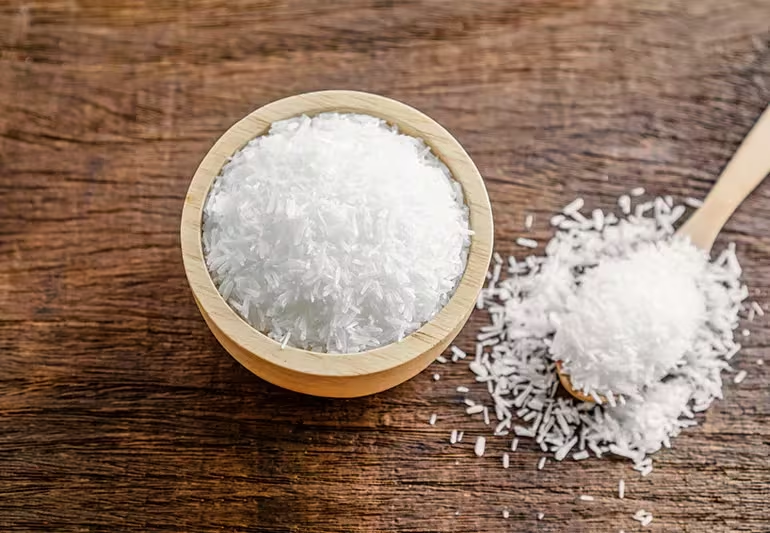On July 25, 1908, Japanese chemist Kikunae Ikeda received a patent for making monosodium glutamate (MSG)—what many of us call bột ngọt or mì chính. The idea came from a simple moment at home: Ikeda was eating his wife’s seaweed soup and felt a special, savory taste he couldn’t place. He took the kelp to his lab, broke it down, and found tiny crystals. When he tasted them, he recognized that same deep, meaty goodness.
That taste was from glutamic acid. When combined with sodium, it becomes monosodium glutamate (MSG). Ikeda named this unique taste umami—now accepted as the fifth basic taste alongside sweet, sour, salty, and bitter. He also teamed up with entrepreneur Saburosuke Suzuki to found Ajinomoto, which began producing MSG so home cooks could bring that “slow-simmered stock” flavor to everyday meals with just a pinch.
Key point: Humans like umami because it signals protein-rich foods. During evolution, being drawn to the taste of protein helped us survive. That’s one reason umami feels so satisfying.
Why a tiny pinch works
Ikeda tested how much MSG you actually need. He found that just 1 gram in 3 liters of water is enough for people to notice the umami taste. Use too much and the dish can actually taste worse—so MSG is about balance, not a heavy hand.
Modern MSG is usually made by fermentation of plant ingredients—think of how we make yogurt, soy sauce, or vinegar. It’s not a scary chemical from a lab; it’s produced through a natural, well-understood process that’s been refined for over a century.
The “Chinese Restaurant Syndrome” panic
MSG was widely welcomed before World War II. Then, in 1968, a letter to the editor appeared in the New England Journal of Medicine describing symptoms like neck tingling, muscle weakness, and fast heartbeat after eating at Chinese restaurants. The writer guessed that MSG might be the cause (he also mentioned other possible factors like rice wine or soy sauce). The letter offered no clinical data—no proper experiment, no controlled study. Still, the idea spread fast.
Media coverage exploded. Many Chinese restaurants put up “No MSG” signs to calm worried customers. Scientists rushed to test MSG—but early studies often used poor methods:
- Some gave animals huge doses far beyond normal food use (the human equivalent would be absurd—like half a kilo for a 70-kg adult).
- Some injected MSG under the skin or into veins instead of giving it as food, which bypasses digestion and isn’t how we eat.
- Many studies had tiny sample sizes, no placebo controls, and no double-blind design.
Not surprisingly, shaky methods led to shaky results—but the headlines stuck. A moral panic began, and the “MSG is bad” myth lived on for decades.
What good studies actually show
When researchers use proper clinical standards—reasonable doses, food intake (not injections), adequate sample sizes, placebo controls, and double-blind methods—the findings are consistent: glutamic acid and its salts (including MSG) are safe at normal dietary levels.
Major health authorities agree:
- The FAO/WHO Joint Expert Committee on Food Additives has long recognized MSG as safe.
- The U.S. FDA lists MSG as “Generally Recognized as Safe (GRAS)”.
- The European Food Safety Authority (EFSA) likewise deems it safe within normal intake.
In the EU, the acceptable daily intake for glutamic acid and its salts is 30 mg per kilogram of body weight. For a 70-kg adult, that’s about 2 grams per day. Even double that amount isn’t considered dangerous if not consumed every single day for long periods. And remember: MSG is potent—you need very little to get the flavor lift.
How fear took over—and why it missed the mark
So where did the fear come from? Two cultural forces helped it spread:
- Anti-Asian bias: The scare started in Western media and often targeted Chinese restaurants, not Italian food (which also uses glutamate-rich ingredients like parmesan and tomatoes) or other cuisines.
- Rising fear of “chemicals”: In the 1960s and 1970s, the public became more worried about industrial chemicals—partly due to books like “Silent Spring” exposing real environmental harms. That broader anxiety spilled over into food additives, including MSG.
But MSG doesn’t fit the “toxic chemical” image. It’s the sodium salt of an amino acid that naturally occurs in foods like tomatoes, mushrooms, seaweed, soy sauce, fish sauce, and aged cheeses. And modern production relies on fermentation, not harsh synthetic processes.
Why MSG is genuinely useful
If you’ve ever simmered bones for hours to make a rich broth, you already know what umami does: it gives depth, roundness, and “body.” MSG helps you reach that depth quickly. That’s why it’s common in East and Southeast Asian kitchens—and increasingly accepted around the world.
MSG can also help you:
- Cook faster: A pinch can turn a thin soup into something that tastes slow-cooked.
- Use less salt: By boosting savoriness, it can make food taste satisfying with less sodium (MSG has about one-third the sodium of table salt by weight).
- Rescue “flat” ingredients: Industrially raised meat and mass-grown vegetables can taste milder than traditional produce. Umami helps bring back the “fullness” those ingredients may lack.
How to use MSG at home (simple tips)
- Start small: A small pinch (think 1/8 to 1/4 teaspoon for a pot of soup) is often enough.
- Layer, don’t replace: Use MSG to enhance, not to cover mistakes. Good stock, soy sauce, fish sauce, mushrooms, tomatoes, and parmesan all add natural glutamates—MSG just helps tie it together.
- Taste and adjust: If food tastes “salty but thin,” you likely need umami, not more salt. If it tastes “dull or bitter,” a tiny bit of MSG can round it off.
- Avoid overuse: Too much can make food taste oddly flat or “chemical.” If you notice this, you’ve gone over the sweet spot. Cut back.
The bottom line
- What happened? In 1908, Ikeda identified umami and created a way to produce MSG, bringing that deep, savory taste to everyday cooking.
- Why the scare? A 1968 letter (not strong science) and flawed experiments fueled a decades-long panic, amplified by bias and general fear of “chemicals.”
- What does science say now? Proper studies and major food safety agencies agree: MSG is safe at normal dietary levels.
- Why keep it in your kitchen? It’s a useful, efficient seasoning that boosts flavor with just a pinch—and can even help you use less salt.
Short answer: MSG isn’t the villain. Used wisely, it’s a smart, safe tool to make everyday food taste better—fast.










































